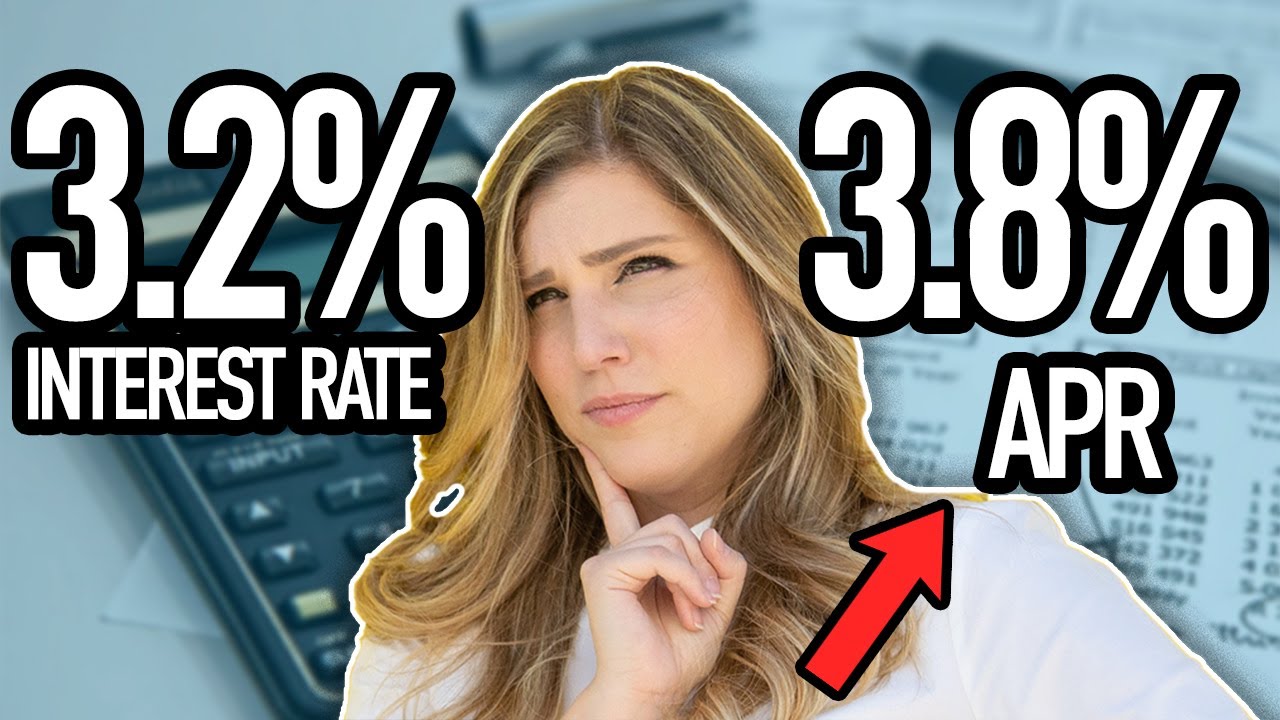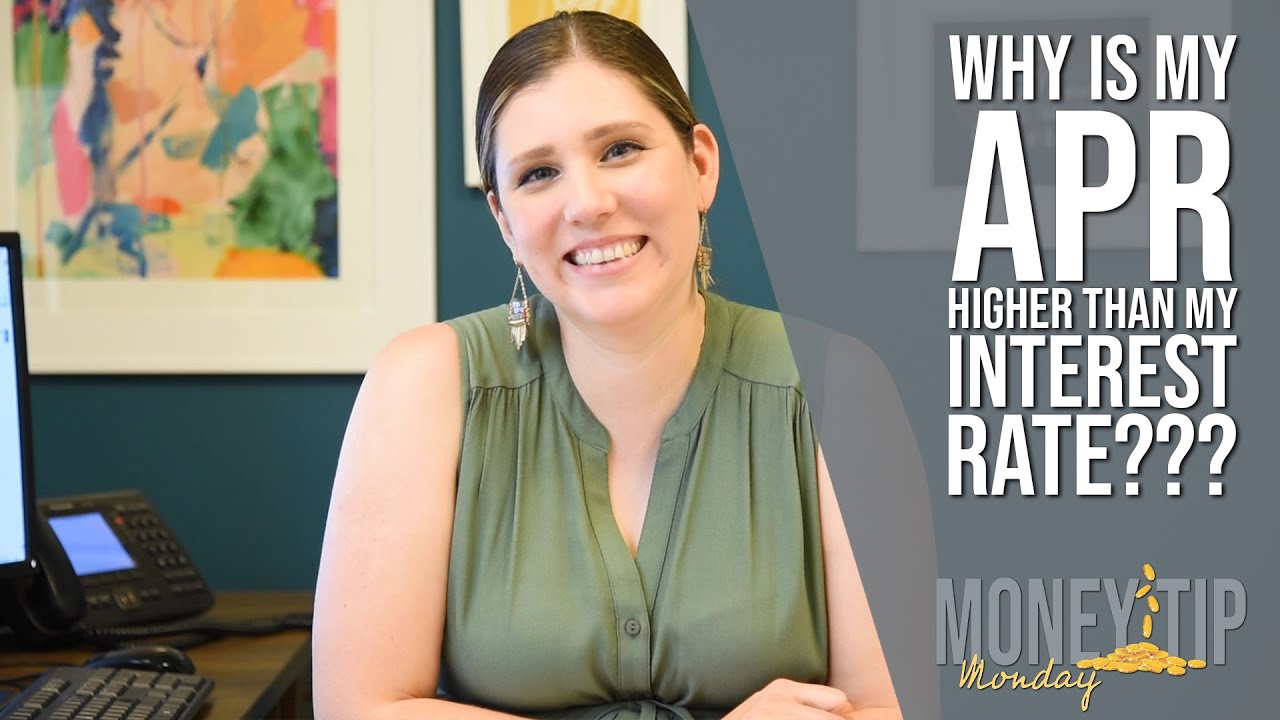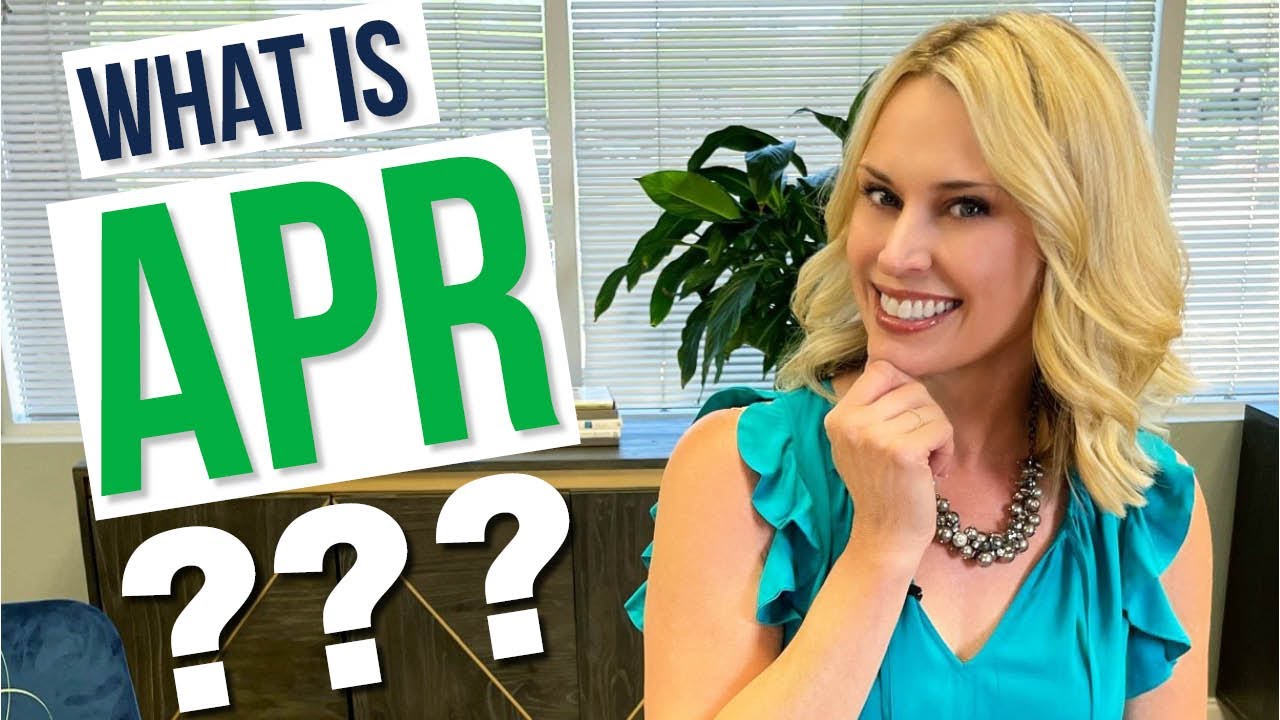Demystifying Mortgage APR: The Foundation of Your Loan Costs
When it comes to securing a mortgage, the Annual Percentage Rate, or APR, serves as the compass pointing you toward the real cost of your loan. So, let’s slice through the complexity: Mortgage APR is not just the interest you pay; it’s a broader measure that weaves in lender fees, mortgage broker fees, and other expenses you’ll encounter along your home-buying journey. It’s the big fish of numbers that can bite into your budget over time.
Understanding the APR on your mortgage is like unraveling a grapevine—there’s a lot twisted within it. Let’s take Sherry, a first-time homebuyer, as an example. She hooks an interest rate at 6.5% but her APR is actually 6.75% because it bakes in origination fees and processing costs. To get it straight, it’s crucial to remember that your monthly payments are based on your interest rate, not your APR. Still, your APR offers a more authentic snapshot of what you’ll fork out over the life of the loan.
Lenders have their own secret sauce for calculating APR, influenced by several ingredients: loan term, loan amount, and a concoction of fees. Keep your eyes peeled, as a lower APR generally signifies fewer fees and a lower cost over the life of the loan.

Exploring Real-World Examples: How Different Mortgages Stack Up
Let’s roll up our sleeves and look at some live examples. Imagine three folks—Tom, Dick, and Harry—armed with the same credit score and down payment, but each locks in a mortgage with a different lender. Tom goes with Wells Fargo, snagging an APR of 6.8%. Dick partners with JP Morgan Chase, landing a 6.9% APR, and Harry shakes hands with Quicken Loans for a 7% APR.
Every percentage point’s leap may seem like a minnow, but over a 30-year loan term, we’re talking serious clams.
Suppose each borrowed $300,000. Tom’s monthly payment (interest and principal) would come in at about $1,945. Dick would dish out $1,967 per month, while Harry would be on the hook for $1,989. It sounds like pocket change month-to-month, but over 30 years, Harry would end up shelling out more than Tom by a cool $15,840. Yikes, that’s a sharp sting!
The variations are even more nuanced between fixed-rate and adjustable-rate mortgages. Fixed rates offer a cozy blanket of predictability, whereas adjustable rates can swing up and down like a pendulum, influenced by market whims, impacting your APR.

| Factor | Description | Impact on Mortgage APR |
|---|---|---|
| Interest Rate | The base rate charged on the mortgage loan. | Primary component of APR; higher rate means higher APR. |
| Points | Fees paid upfront to lower the interest rate. 1 point typically costs 1% of the loan amount. | Increase APR if paid; results in lower interest over the life of the loan. |
| Mortgage Broker Fees | Fees charged by the mortgage broker for arranging the loan. | Increase APR; less impact if spread out over the life of the loan. |
| Other Charges | Includes loan origination, underwriting fees, and charges from the lender. | Each fee adds to the APR; more charges mean higher APR. |
| Loan Term | The period over which the loan will be repaid (e.g., 15 years, 30 years). | Shorter terms typically have lower APRs due to less risk for lenders. |
| Market Conditions | The current state of the mortgage market, influenced by economic factors. | Good rates vary by market; historical rates influence what is considered “good”. |
| Credit Score | The borrower’s creditworthiness. | Higher credit scores can secure lower APRs. |
| Loan Type | Type of mortgage (fixed-rate, adjustable-rate, FHA, VA, etc.). | Different loans have different rates and charges affecting APR. |
| Buyer’s Regret | The idea of missing out on lower past rates when current rates are higher. | Psychological factor, no direct impact on APR but affects willingness to refinance/buy. |
| Current “Good” Rate | Today’s market average for a “good” rate (high-6% range as of the last update). | Provides a benchmark for comparison; anything significantly below this range could be considered “good”. |
Overlooked Factors That Influence Your Mortgage APR
Now, keen homebuyers, pay attention! Your APR isn’t just a number lenders pluck out of thin air. Your credit score and loan-to-value (LTV) ratio play the leading roles in this financial theater. A stellar credit score can sway lenders to offer you a standing ovation in the form of a lower APR. On the other hand, if your LTV ratio’s on the high side, signaling you’re borrowing a hefty chunk compared to the home’s value, lenders might just tighten the screws on your APR.
Don’t overlook geography either—a borrower in Texas might wrangle a different APR than one in California, thanks to varying local regulations and market conditions.

Expert Strategies to Secure the Best Mortgage APR
You want the brass tacks on snagging the best APR? Get your finances buffed and polished to a shine. Symone Sanders, a financial analyst we chatted with, echoed this sentiment: Improving Your credit score can be the golden ticket to a heartening APR.
Besides flexing your credit muscles, it’s key to pound the pavement—shop around and compare offers like you’re browsing for the finest cropped Hoodie. Oh, and remember to play the field; there’s no need to say ‘I do’ to the first lender that winks at you.

Unveiling the Hidden Costs Embedded in Mortgage APR
Underneath the advertised APR lie costs that lurk in the shadows, waiting to catch you off-guard like uninvited guests. Take closing costs—these can include a slew of fees that lenders might slip into the APR. And don’t even get me started on private mortgage insurance (PMI) if you’re putting down less than 20%.
You may think you’re getting a sweet deal with a lower APR, but if it’s padded with hefty fees—like, let’s say, a massive Marlow pillow-sized loan origination fee—the party’s over. Stick to the loan estimate document like glue, folks. It lays out all the fees you’re contending with in black and white.

APR Fluctuations: Understanding the Market’s Influence
APR isn’t a hermit; it loves company and often gets swayed by the merry band of market trends, like changes in policy by the Federal Reserve. Let’s not forget economic indicators that usually lead to a tide shift in mortgage APRs—we’re talking employment figures, inflation rates, and housing market health.
While I’m not one for crystal ball gazing, current analyses hint at a slowing rise in APRs. Experts suggest future trends may see APRs bobbing in sync with broader economic currents, so keep your finger on the pulse.
Navigating APR Changes During Loan Refinancing
Got an APR that’s higher than a kite on a windy day? Refinancing could bring it down to earth. But it’s not without its pitfalls—there’s a cost to courting a new loan. You’ve got to weigh these against the likely blush of relief a lower APR promises.
If you’re contemplating the refinancing cha-cha, timing is everything. The sweet spot is when rates are dipping like a teeter on the yellowstone horizon, and your credit score is standing tall.
Leveraging APR in Mortgage Negotiations
Yes, you can jockey for a better APR, and no, you don’t need to be a Wall Street whiz kid. Here’s a nugget of wisdom: financial institutions sometimes present the APR like it’s set in stone, but there’s wiggle room. Get this—an informed buyer who plays their cards right can often bluff their way to a better deal.
The Future of Mortgage APR: Innovations and Predictions
The mortgage landscape is not static, my friends. It’s as lively as a jazz band improvising on stage. Technologies like AI could soon streamline the mortgage process, potentially affecting APRs with newfound efficiencies.
As the industry evolves, expect to see changes in the way lenders craft their APR offers. And as mortgage regulations unfurl, we could see a new era of transparency and opportunities for savvy borrowers.
Final Reflections on Unlocking Mortgage APR Secrets
There you have it—the curtain’s been pulled back, letting the spotlight shine on the truths about mortgage APRs. We’ve delved into the nooks and crannies of APR, emerging with the wisdom that securing a favorable rate takes more than a casual glance; it takes strategy and savvy.
Armed with these insights, you’re better positioned to navigate the mortgage seas like an old salt. But as with any great voyage, staying informed, continually learning, and reaching out for expert guidance is the wind in your sails. Remember, investing in your financial literacy is not just smart; it’s non-negotiable.
So, my fellow navigators of the mortgage odyssey, with the compass of knowledge in hand and the chart of experience before you, set sail with assurance towards the horizon of homeownership. Let Mortgage Rater be your North Star, shining light on the path to the best low mortgage rates, low rate mortgage, and lowest mortgage interest rates to make your dreams of a perfect abode a reality.
Demystifying Mortgage APR
Alright, buckle up folks, we’re diving headfirst into the world of mortgage APR! Now, you may think mortgages are as dry as a cabernet from abc fine wine & spirits, but hold your horses, because there’s a fun side to these numbers. You see, percentage rates can be sneaky little critters, and understanding the APR could mean the difference between a deal that’s smooth as silk or one that leaves a sour taste in your mouth.
A Toast to Transparency
Speaking of taste, let’s raise a glass to transparency. Just like you wouldn’t buy a bottle without knowing the vineyard, you shouldn’t sign on a dotted line without understanding the mortgage APR. It’s like the content label on your libation—it shows the true cost of your loan, including interest, fees, and all those little extras. And here’s a corker for you: did you know that sometimes lenders will dangle a low-interest rate in front of you, but the APR is where they sneak in the fees? Yup, you’ve gotta watch out for those hidden extras like a hawk!
Savor the Savings
And while we’re sipping on facts, savor this one: shopping around for the best mortgage APR is like hunting for that exclusive vintage—worth every minute. Each lender calculates APR slightly differently, which means there’s room for negotiation. Just like bargaining for a rare find at abc fine wine & spirits,( nabbing a lower APR could save you a bundle over the life of your loan. So, don’t settle for the first offer; swirl it around, give it a sniff, and make sure it’s the perfect bouquet for your financial situation.
Hold on to your wallets, because I’m about to hit you with a whopper: the difference between a 3.5% and a 4% APR on a 30-year, $300,000 mortgage can add up to a mountain of cash—over $30,000! That’s a whole cellar of high-end spirits we’re talking about. So, when you’re eyeballing those numbers, remember: like a connoisseur selecting a fine wine, attention to detail when comparing mortgage APRs can mean a more luscious financial future. Cheers to smart choices!

What is the APR for a mortgage?
Sure thing. The annual percentage rate, or APR, includes not just the interest rate but also fees and other costs associated with getting a mortgage.
Is 6% APR high for a mortgage?
Having a 6% APR on a mortgage isn’t low, but it’s not unusual in today’s market, where rates have increased compared to a few years ago.
Is 5% APR for house good?
Nabbing a 5% APR for a house loan is pretty decent now, especially when rates have been on the up and up.
Is 2.75 a good mortgage rate?
Yep, 2.75% is an outstanding rate for a mortgage these days; it’s one you’d brag about at a barbecue.
What APR rate is too high?
An APR that’s too high is really anything that strays significantly above the current average market rates. So, if you’re seeing numbers that make your eyebrows hit your hairline compared to advertised rates, it’s probably too much.
What is a good APR on a 30 year mortgage?
A good APR on a 30-year mortgage is one that aligns with or beats the current average market rate. If you can score something in the high-6% range or lower, you’re doing alright.
Are mortgage rates dropping?
Mortgage rates aren’t making any large downward leaps right now, and the trend doesn’t seem like it’ll reverse any time soon.
Is 8% APR too much?
An 8% APR is pretty steep. Back in the day, it was normal, but by current standards, that’s on the higher end.
Is 8% a bad APR?
Yes, an 8% APR isn’t great. If this is what you’re offered, you might want to shop around a bit more or wait for better rates if you can.
Is it possible to get a 4% mortgage rate?
Scoring a 4% mortgage rate today is like hitting the jackpot. It’s not impossible but it’s rare, especially with the trend we’re seeing.
What will mortgage rates be in 2024?
Predicting mortgage rates is a bit like trying to guess the weather several months out. But the way things are looking, rates might still be in the high-6% range or even higher in 2024.
Will interest rates drop in 2024?
Interest rates might drop in 2024, but there’s no crystal ball to confirm that. Economic conditions and policies have a big say in this, and we’ll just have to wait and see.
Is a 2% mortgage rate possible?
A 2% mortgage rate in today’s financial climate is highly unlikely – it’d be like finding a needle in a haystack.
Will mortgage rates go down to 3 percent?
The chances of mortgage rates sinking to 3% in the near future are pretty slim, considering the current upward trend.
Is 3% good for mortgage?
By today’s benchmarks, 3% for a mortgage is excellent, actually. Anything at or below that is cause for celebration.
Is 6% APR good?
A 6% APR was considered okay once upon a time, but it’s not the best you can do today. Still, given the market trends, it’s not the worst, either.
Is a 28% APR high?
Oh, a 28% APR is sky-high for a mortgage – that’s more like credit card territory. Definitely not something you’d want.
Is an 8% APR good?
Not at all, 8% APR is not good. You’ll want to aim much lower than that.
Is 3% a good APR?
A 3% APR is really good. It’s like snagging front-row seats at a hit concert – rare and totally worth it.


